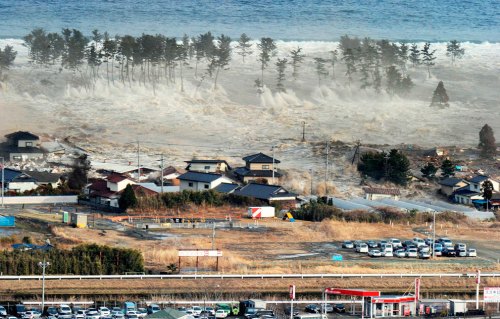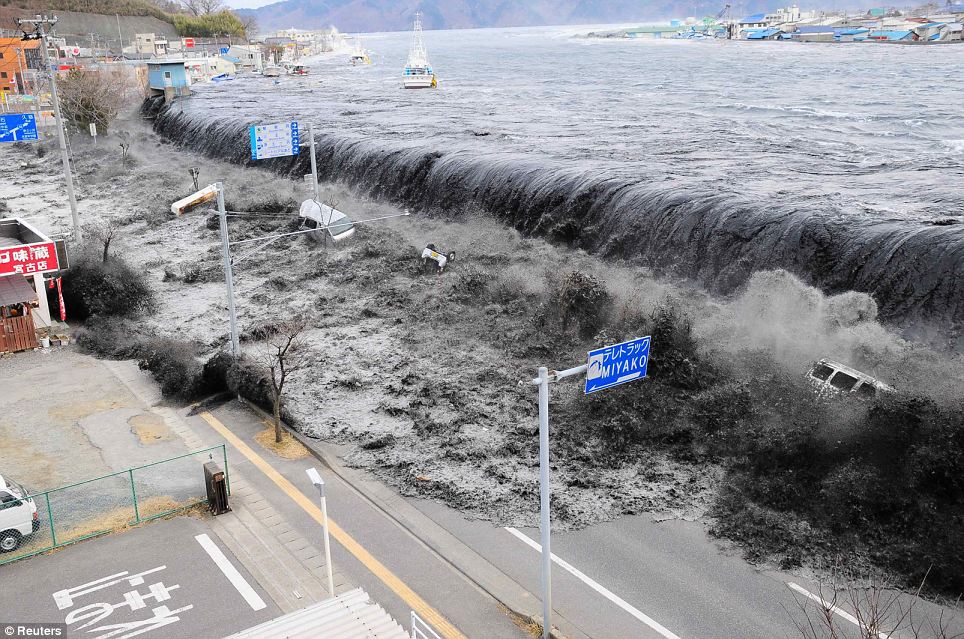|
Horrifying photos that make it clearer what a tsunami is
Bjorn Larsen writes:
More pictures—some of these show the incredible view of the water actually coming in, with dry land not yet hit, amazing perspectives. I guess I finally understand how, when we discover whole civilizations buried under existing cities, these areas moved “underground,” by possibly being swallowed by such amounts of water and debris. 
Be sure to see the 6th and 7th pictures in the series, showing the wave hitting Natori City. In the first of the two photos (above is a reduced-size version of it) we see homes being tossed about; in the second photo the area is devastated and no buildings are left. The photos make it clear, as Denis Keohane explains at American Thinker (see earlier entry), that, unlike with a regular wave which is followed by a trough, the entire ocean behind the “crest” of the tsunami is raised up, and is higher than the land. Also see in both photos how even though the land is already flooded, the tsunami is still breaking. As the raised, rapidly moving ocean meets the land, the water breaks and forms the white foam of the breaking wave, and that white foam, instead of collapsing as with a regular wave, remains in place as the tsunami continues to break at that spot and continues to pour more water onto the land. Bjorn Larsen writes:
I have always wanted a house by the sea, to listen, to observe it during storms (I grew up on the North Sea, a rough piece of ocean if there ever was one)—now I am no longer sure.Karl D. writes:
Bjorn wrote:John Dempsey writes:
Here is a picture just published by the Daily Mail that shows the height of the ocean and that of the shoreline as the tsunami hits. Incredible. 
LA replies:
We see again how there is no trough behind the breaking wave, but that the ocean behind the wave is as high as the wave.LA continues:
Also, the man who took this photo, where was he standing? At a fifth story window? Why was he standing there instead of running for his life? Posted by Lawrence Auster at March 13, 2011 01:51 PM | Send Email entry |